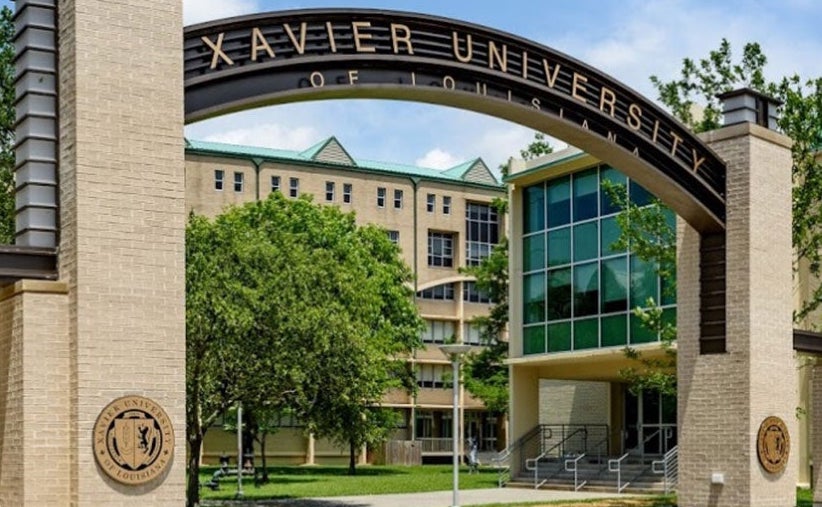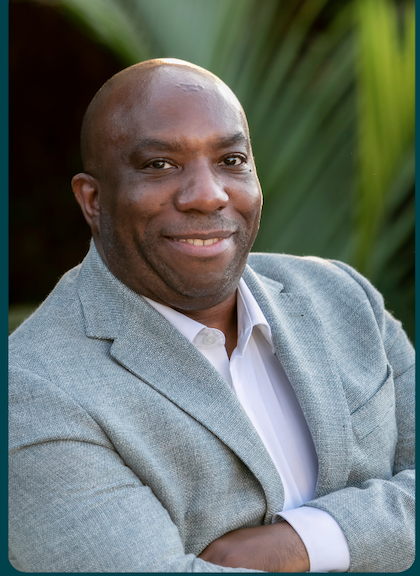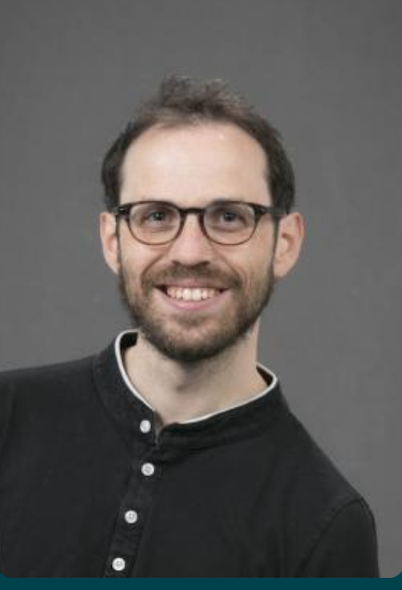Fall 2025 seminar schedule

Thu Aug 28, 12:15pm · NCF 269 — GENERALIZED FERMAT EQUATIONS IN A POST-FERMAT WORLD
Fermat’s Last Theorem is one of the most famous problems in mathematics, captivating mathematicians for over 350 years with its deceptively simple statement:
Theorem. (Fermat’s Last Theorem) The equation
\(x^n + y^n = z^n\)
has no solution in integers \(x,y,z\) for \(n\geq 3\) when \(xyz\neq 0\).
After centuries of attempts, Andrew Wiles and Richard Taylor’s proof in 1995
marked a historic breakthrough.
However, the story doesn’t end there. In the wake of Wiles and Taylor’s proof, mathematicians turned their attention to a broader class of equations known as Generalized Fermat Equations (GFE), which take the form:
\begin{equation}
X^p+Y^q=Z^r,
\end{equation}
where \(p,q,r\geq 2\).
These equations lie at the intersection of number theory and algebraic geometry, requiring tools such as the “Modular Method”, Galois representation, level-lowering techniques, and the study of rational points on modular curves.
Intriguingly, in 1997, an American banker and mathematician, Andrew Beal proposed a striking conjecture, now associated with a \$1 million prize:
Conjecture (Beal). Let \(p, q, r\) be primes with \(\min\{p, q, r\}\geq 3\). Then the equation (1) has no solutions in coprime integer tuples \((X, Y, Z)\) with
\( XYZ\neq 0\).
Despite much effort, the conjecture remains unsolved except in a few special cases.
In this expository talk, we will explore recent developments in Generalized Fermat Equations, focusing on joint work with Mike Bennett
(University of British Columbia). Our findings offer new insights into this rich and evolving area of mathematics.

Thu Sep 18, 12:15pm · NCF 269 — Chasing the Erdős-Turán Law: The hunt for a proof from "The Book" in statistical group theory
This talk substitutes the Math 4511S (Colloquium) and Math 1070H (Introductory Calculus I - Honors) classes for today.
Let \(\sigma\) denote a permutation of \([n] = \{1, 2, \ldots, n\},\) and let \(O(\sigma)\) denote the order of \(\sigma.\) In 1967,
Paul Erdős and Pál Turán proved the following lovely theorem, since referred to as the Erdős-Turán Law.
Theorem.
If \(\sigma\) is a uniform random permutaton of \([n],\) then
\[\mathbb{P}\left[\frac{\log O(\sigma) - \frac{1}{2}\log^{2}n}{\sqrt{\frac{1}{3}\log^{3}n}} \leq x\right] \to \frac{1}{\sqrt{2\pi}}\int_{-\infty}^{x} e^{-t^2/2}\,dt\]
as \(n \to \infty.\)
In other words, the order of a random permutation has an asymptotically lognormal distribution. However, Erdős and Turán's original proof is rather long and complicated, and so they invited mathematicians to find a simpler, more elegant proof from "The Book." Their challenge has inspired nearly six decades of ongoing research activity that lies in the intersection of analytic combinatorics and stochastic processes. In this expository talk, we will explore the many strengthenings and generalizations of the Erdős-Turán Law together with various applications and related problems.

Messiah University
Fri Oct 3, 11:00am · NCF 269 — How Mathematicians Saved Lives in World War II
One of the most significant achievements of the Allies in World War II was the cryptanalysis of the Enigma ciphering system. Historians have estimated that this achievement shortened the war by at least two years, saving millions of lives. The role of Alan Turing as well as his colleagues at Bletchley Park is widely known, especially due to the 2014 film The Imitation Game, but this is only part of the story. Polish mathematicians were the first to break German messages enciphered by the Enigma, and their ingenious method relied on a theorem from permutation theory which has been called "the theorem that won World War II". Permutations are mathematical objects that are discussed in certain undergraduate courses and interesting even beyond this remarkable application during World War II. In this talk, we will discuss this initial cryptanalysis of the Enigma, introducing permutations and relevant theorems along the way.

Tulane University
Thu Oct 9, 12:15pm · TBA — Gibbs ensembles for Integrable systems and Random matrices
This talk will focus on the statistical mechanics of integrable systems by establishing a direct connection to random matrix theory. We will introduce the concepts of integrable systems—special, non-chaotic physical models that are exactly solvable—and random matrices. We will show how these two fields are related. Specifically, we will show that the statistical behavior of integrable systems with random initial conditions is precisely described by the statistics of well-known random matrix ensembles. To make this concrete, we will focus on a specific example, the Volterra lattice. We will apply a powerful method known as generalized hydrodynamics to derive its 2-point correlation functions. These functions measure the statistical relationship between different parts of the system, offering key insights into its overall behavior. This talk is mainly based on the following papers:
- G. Mazzuca, Generalized Hydrodynamics for the Volterra Lattice: Ballistic and Nonballistic Behavior of Correlation Functions, J. Phys. A: Math. Theor. (2024)
- G. Mazzuca and R. Mémin, Central Limit Theorem for β-Ensembles at High Temperature and for Integrable Systems: a Transfer Operator Approach, Ann. Henri Poincaré (2024)
- G. Mazzuca and T. Grava, Generalized Gibbs Ensemble of the Ablowitz–Ladik Lattice, Circular \(\beta\)-Ensemble, and Double Confluent Heun Equation Commun. Math. Phys. (2023)

Thu Oct 16, 12:15pm · NCF 269 — Chasing the Erdős-Turán Law: The hunt for a proof from "The Book" in statistical group theory: Part II
In this second part of the series, we explore Andrew Barbour and Simon Tavaré's derivation of the convergence rate for the Erdős-Turan law. In particular, they showed that if the mean of the approximating normal distribution for the log-order of a random permutation is slightly adjusted, then the error is of order \(1/\sqrt{\log n}.\) The main tool for this is the Ewens Sampling Formula (ESF), which describes the sampling distribution of allele frequencies in a population undergoing neutral evolution. We will see how ESF is conveniently used to model random permutations via two discrete-time stochastic processes, the "Chinese Restaurant Process" and the "Feller Coupling", from which we can then access the central limit and functional limit theorems for the log-order of a random permutation. We will then briefly discuss the works of Eugenijus Manstavičius and Vytas Zakharovas, where they verified the optimality of the aforementioned convergence rate and extended the Erdős-Turan law to a class of additive statistics on cycle lengths. Recent advances and related problems will also be summarized.

University of South Alabama
Mon Oct 27, 11:00am NCF 160 — On Math and Music - Or: Why I failed to build the perfect piano
Mathematics and music are both lifelong passions of mine. For years, they appeared to be independent non-intersecting interests; until I tried to design the perfect piano... In this talk, I will explain a mathematical approach to building a perfect piano. We will learn about some music theory (what are sounds, melodies, intervals, etc.) and then define what we mean by a “perfect” piano. I will then provide a mathematical proof showing that any attempts to build such a piano are doomed to fail. This talk is geared towards a general audience. The goal is to illustrate some common themes in mathematics (abstraction, simplification, axioms, proofs, etc.) by discussing the perfect piano. There will be live music!
Dr. Wilbert is an Assistant Professor at the Math Department with University of South Alabama in Mobile, Alabama. He obtained his Ph.D. at the University of Bonn and the Max Planck Institute for Mathematics in Bonn, Germany, in July 2017. Before moving to Alabama, he was a Postdoc at University of Georgia and a Research Fellow at the University of Melbourne in Australia. Dr. Wilbert is an expert on geometric and combinatorial representation theory, categorification, low-dimensional topology, and topological quantum field theory. His research is supported by the National Science Foundation.

Pomona College
Thu Oct 30, 12:15pm NCF 175 — A Survey of Diophantine Equations
There are many beautiful identities involving positive integers. For example, Pythagoras knew \(3^2 + 4^2 = 5^2\) while Plato knew \(3^3 + 4^3 + 5^3 = 6^3\). Euler discovered \(59^4 + 158^4 = 133^4 + 134^4\), and even a famous story involving G.H. Hardy and Srinivasa Ramanujan involves \(1^3 + 12^3 = 9^3 + 10^3\). But how does one find such identities? Around the third century, the Greek mathematician Diophantus of Alexandria introduced a systematic study of integer solutions to polynomial equations. In this talk, we'll focus on various types of so-called Diophantine Equations, discussing such topics as Pythagorean Triples, Pell's Equations, Elliptic Curves, and Fermat's Last Theorem.

Worcester Polytechnic Institute
Mon Nov 17, 11:00am NCF 160 Low Reynolds Number Fluid Dynamics: Physics Meets Biology Meets Computational Science
This talk will be a friendly introduction to the mathematics and physics behind low Reynolds number fluid dynamics. No prior knowledge of fluid dynamics or numerical mathematics will be assumed. We will discuss famous results such as Purcell's Scallop Theorem, canonical models of microswimmers, and take a glimpse into a popular computational method used to simulate fluid-structure interaction at low Reynolds number.

Okinawa Institute of Technology
Mon Nov 24, 11:00am NCF 160 — Symmetric groups, Hecke algebras, and KLR algebras
I will present a brief introduction to the representation theory of symmetric groups and their Hecke algebras, including their connections to KLR algebras via the Brundan–Kleshchev isomorphism. This introduces a grading into the story. Time permitting, I will briefly explain my recent work on classifying the Schurian-finiteness of blocks of these algebras using tools that arise from this grading.